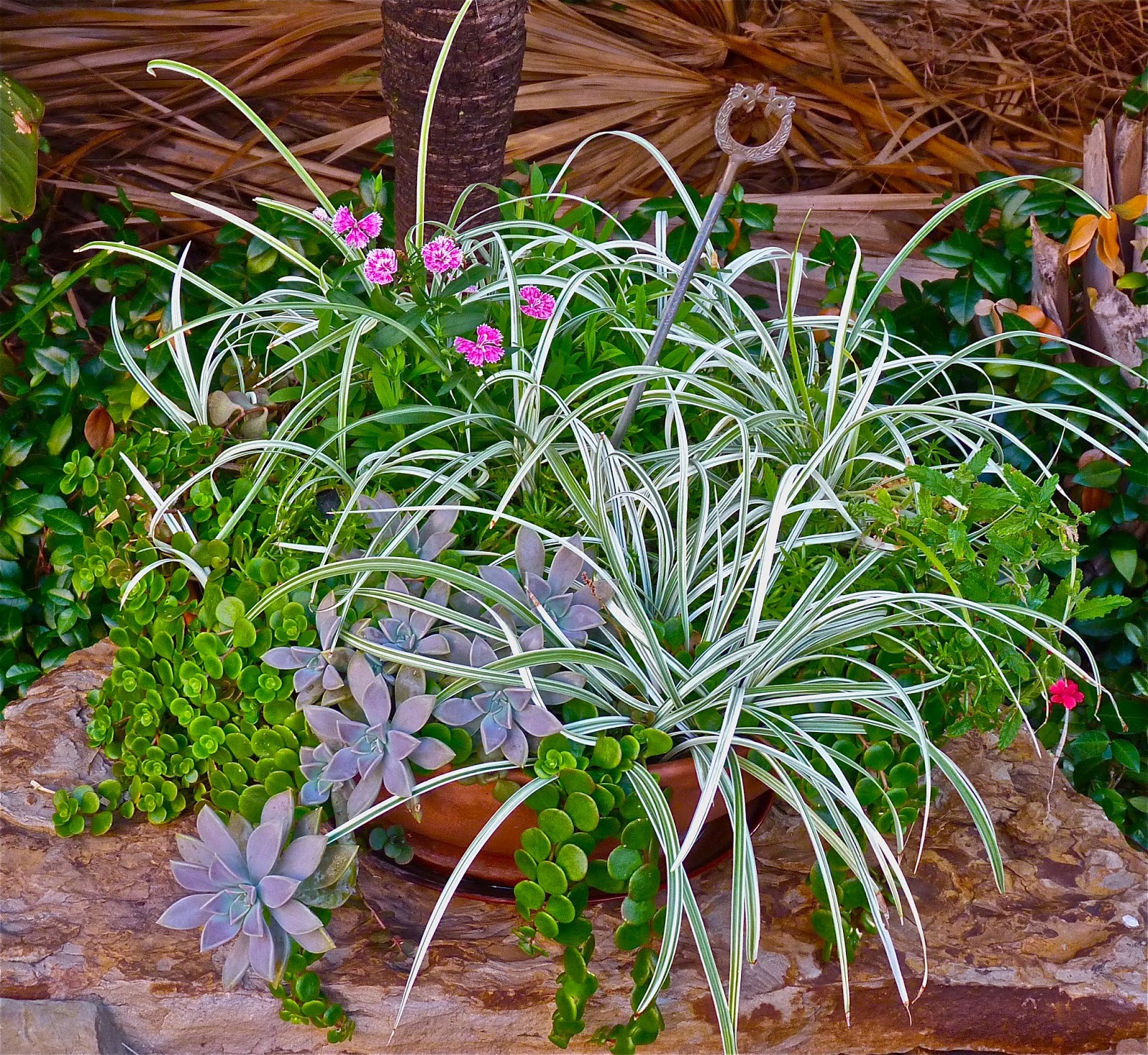An alternately entertaining and frustrating aspect of gardening is my relative inability to see in my mind's eye what several year's growth might mean to the overall composition of a bed. Though I generally have an idea of what I want an area to look like, the steps to take in getting there are often punctuated, if not outright interrupted, by the need for corrective measures.
That's part of the appeal of dish gardens. They serve as the ideal practice bed in microcosm. The mistakes I make designing my dish planters are the same ones I make when planting beds. Only in dish gardens the missteps, if not any easier to see or accept, are at least a lot easier to address.
Case in point? I have a dish planter that I started out filling with a collection of succulents. I love me some succulents, but that planter was bor-ing. We've all seen a thousand of these and even though I like the look, it wasn't what I wanted for this garden in miniature.
After a few weeks I put in several clumps of Aztec grass thinking the form of the foliage in combination with the variegation would offer a nice contrast. Better!
I popped in dianthus for the emerald green foliage and occasional white lined blooms. Better yet!
In fact I was pretty well pleased with the whole shebang (and with myself for putting it together) until suddenly...I wasn't.
Something was off. At first I thought adding the blooming plants had been a misstep, that I should have stuck with foliar interest alone. But I was in love with those few blooms floating above the rest of the massed plants. The flower's color found an echo in one of the succulents and I liked that.
Some other element was holding things back from being visually pleasing only I wasn't quite able to put my trowel on what it was.
Some other element was holding things back from being visually pleasing only I wasn't quite able to put my trowel on what it was.
Cue a lot of standing and staring. Occasionally accompanied by muttering and glaring. Eventually it came to me. The Aztec grass. It spread and spread, the way liriope always wants to do, encircling the planter, throwing up a sheltering mass of white striped leaves as canopy above and around the succulents. When I looked at that bowl, what I now saw was a distracting jumble of criss-crossing white. At the first available opportunity, the Aztec grass had to go.
I was in no way prepared for the volume of the grass I removed. I started out leaving two small clumps remaining in the bowl. I then spent the next 24 hours fretting and second guessing myself, wondering how long it would take those same two clumps to recolonize the planter.
What I wanted was to stop obsessing about and start enjoying this garden again. So, first thing today I took the remaining sprigs of Aztec grass out. I then moved them to join the other newly liberated Aztec sprigs where I'd transplanted them yesterday, filling in the edging for an area that is often in deep shade.
Granted, the bowl looks a bit worse for wear after not one but two sessions of liriope removal. Towards the end there may have been a certain amount of not-so-gentle yanking involved. But, with just a little luck and a bit more time, the remaining plants will fill in much more successfully without having to compete with a faster growing grass.
Even slightly tattered, I'm a lot happier with this new clear view of the other plants in play minus the overhanging white stripes. This planter should stay off the Must-Be-Done list for a long long while. And after taking out the opuntia, that's twice in one month that a little subtraction has been the best addition to make to my spaces. It is probably premature to state "lesson, learned!", but I think I'm getting there.
Granted, the bowl looks a bit worse for wear after not one but two sessions of liriope removal. Towards the end there may have been a certain amount of not-so-gentle yanking involved. But, with just a little luck and a bit more time, the remaining plants will fill in much more successfully without having to compete with a faster growing grass.
Even slightly tattered, I'm a lot happier with this new clear view of the other plants in play minus the overhanging white stripes. This planter should stay off the Must-Be-Done list for a long long while. And after taking out the opuntia, that's twice in one month that a little subtraction has been the best addition to make to my spaces. It is probably premature to state "lesson, learned!", but I think I'm getting there.

























